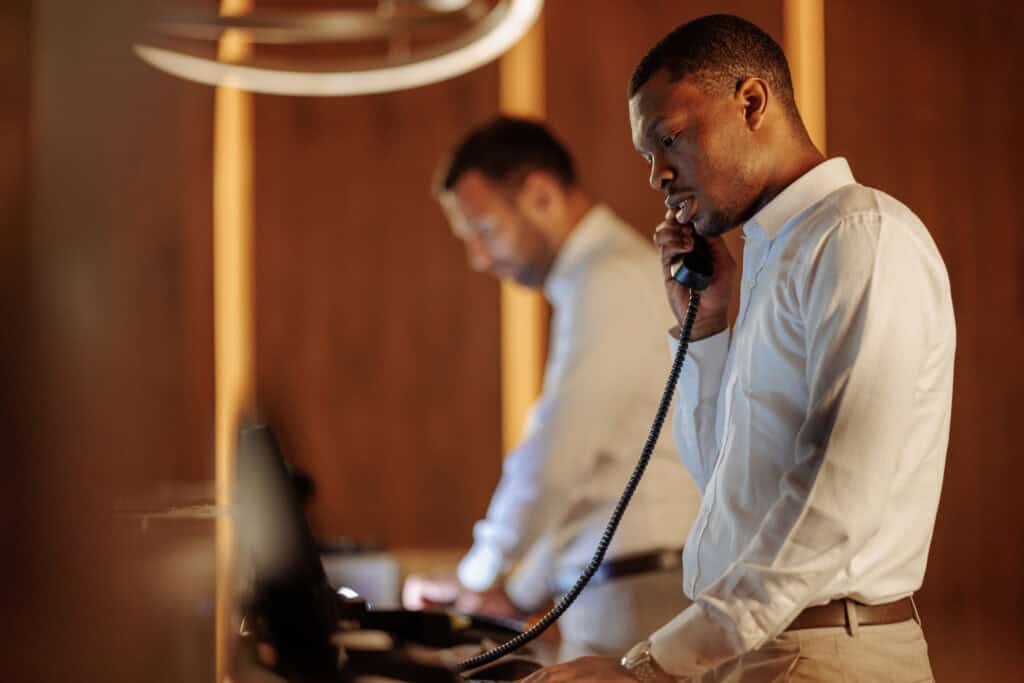Navigating Changes in Tourism and Hospitality: A Practical Guide

This info sheet is part of our Safety Talk series for those who work in tourism and hospitality, developed in partnership with go2HR. Download the Navigating Changes quick reference guide you can share in your workplace, or watch the video.
In the dynamic world of tourism and hospitality, change isn’t just inevitable—it’s a regular part of our work life.
From seasonal transitions to staffing shifts and evolving guest expectations, our industry keeps us on our toes.
Change can include everything from:
- Adapting on shift to last minute guest requests, product shortages or unexpected staff absences
- Changes in working conditions, such as busier shifts with more intense demands, or slower shifts that are less routine
- Changes in weather conditions
- Emergency situations
- Living in staff accommodation for the first time
- Seasonal work shifts or changing work schedules, like day shift to night or overnight
- New colleagues, supervisors or managers
Whether you’re a seasonal worker facing winter layoffs or a year-round employee watching your team change, these transitions can stir up a mix of emotions—and that’s perfectly normal.
The good news? You can build your resilience toolkit using the “5 As” approach to change management.* Let’s break it down in practical terms.
Anticipate
- Anticipate changes by staying one step ahead. In our industry, many changes follow predictable patterns. For example, winter layoffs typically start in February, giving you time to prepare.
- Create your change preparation toolkit now: build an off-season budget, keep a running list of alternative job opportunities, and set up regular catch-ups with your support network.
Accept
Accept what’s happening by focusing on what you can control. Try this: draw two circles—one for things within your control, one for things outside it. Can’t control seasonal layoffs? True. But you can control how you prepare: polish your LinkedIn profile, join local industry groups, or use downtime to earn new certifications.
Remember, accepting change doesn’t mean you have to love it—it just means you’re ready to deal with it constructively.
Adapt
Adapt your perspective to spot opportunities in challenges. Maybe the off-season is your chance to explore virtual event management certification, especially now that hotels are expanding their hybrid meeting offerings. If you’re a tour guide, consider creating online travel content or virtual tours during quiet periods.
Alter
Alter your environment and routines to make transitions smoother. Try the “worry window” technique—set aside 15 minutes daily for processing your concerns. When worries pop up outside this time, save them for your designated window.
Feeling overwhelmed? Use the “two-minute rule”: focus on quick, actionable steps like updating one resume section or sending one networking email.
Avoid
Avoid additional stress by strengthening your self-care foundation. Prioritize rest, good nutrition, physical activity, and social connections.
Focus on Clear Communication
Clear communication is crucial during transitions. Use the DEAR method: Describe the situation objectively, Express your feelings, Assert what you need, and Reinforce the positive outcome you expect.
When talking with supervisors, come prepared with specific questions and potential solutions. Remember, you’re not navigating these changes alone. Your feelings are valid, your concerns matter, and your capacity to adapt is greater than you might realize. Take each day as it comes, concentrate on what’s within your control, and don’t hesitate to reach out when you need support.
The tourism and hospitality industry may be known for its constant changes, and together, we can build the resilience to thrive through every season.
*Adapted from Workplace Strategies for Mental Health.

Psychological Health and Safety Navigator Training
This experiential training helps you assess readiness for change, apply tools to analyze psychological health and safety, and build a practical implementation plan.